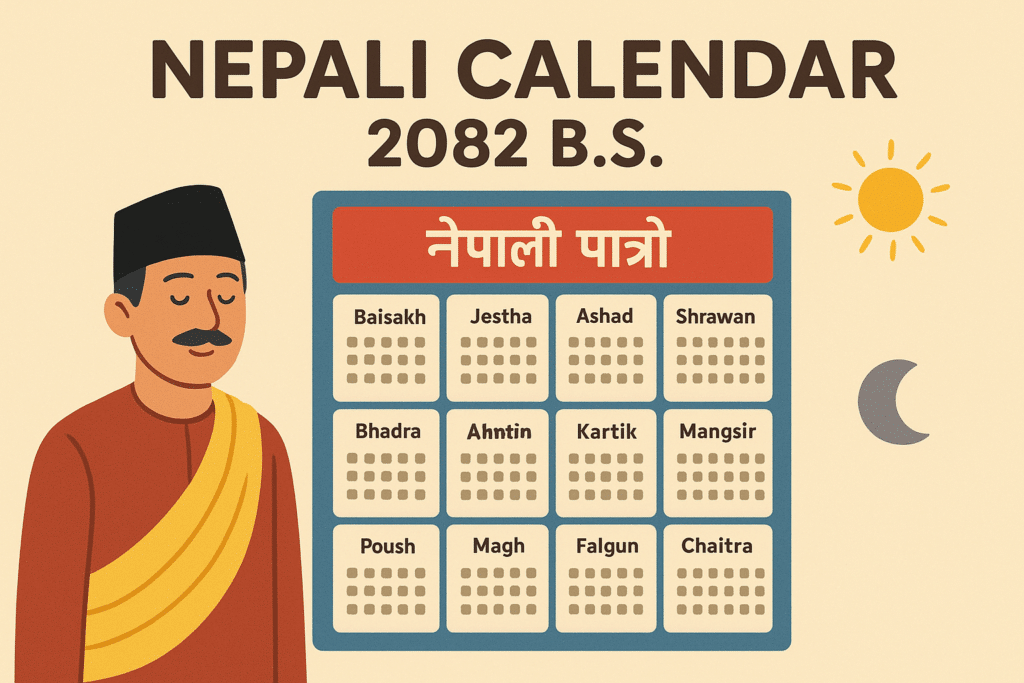Nepali Calendar 2082 B.S. — History, Months & Festivals
Learn about the Nepali Bikram Sambat calendar in 2082 B.S.: history, months, festivals, and the lunisolar system that guides Nepal’s culture.
History of Bikram Sambat
The Bikram Sambat era is traditionally traced to the time of King Vikramaditya. Its starting point is dated to 57 B.C., which is why the B.S. year is usually about 56–57 years ahead of the A.D. year. Over centuries the calendar spread through South Asia and became firmly rooted in Nepal during historic administrative periods. Today, it remains central to Nepali identity and cultural life.
How the Calendar Works
The year in 2082 B.S. begins in mid-April. The calendar has twelve months and balances lunar months with the solar year. To keep lunar months aligned with the seasons, an extra intercalary month called Adhik Maas is added periodically. This blend of solar and lunar rules preserves agricultural timing, festival dates, and religious observances.
Months of the Nepali Calendar
The twelve months of Bikram Sambat are:
Festivals and Cultural Importance
The Nepali calendar determines dates for major festivals and public holidays. In 2082 B.S., Nepalis observe traditional events like Dashain, Tihar, Teej, Chhath, Maghe Sankranti, and Holi. These festivals follow lunar and solar calculations, which is why their dates shift each year on the Gregorian calendar but stay consistent within Bikram Sambat.
Official Use Today
Although Nepal uses the Gregorian calendar for international business and communication, the Bikram Sambat remains the primary reference for government documents, local planning, astrological charts, and cultural life. For many Nepalis, the Nepali calendar is not just a way to count days — it is a living link to history, tradition, and seasonal life.

